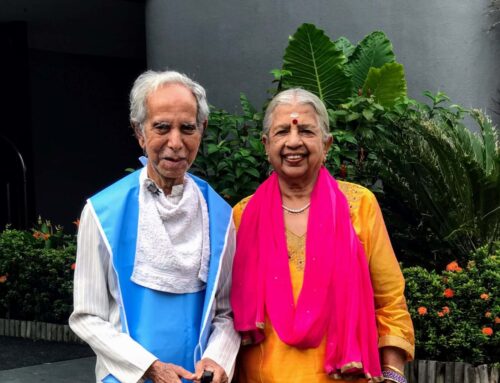An urgent need to preserve and value baby girls in India
Shoba Narayan (Writer)
“Would you kill a child? Would you kill your grandchild? I have seen women do this and, believe me, it is not difficult. Give the newborn milk laced with pesticides or poisonous herbs. The infant will suck the milk greedily and die within an hour.”
The speaker was my uncle. The place was Salem district in interior Tamil Nadu. What he was talking about was the fairly routine practice of female infanticide practised in the nearby villages. This was more than 10 years ago, and I thought my uncle was spinning fanciful tales as usual. It was only later that I realised that the area hid a morbid secret. Some of the village women, who braided my hair, called me “Kannu”, (an endearment meaning “eye”) and treated me with such affection, were baby-killers. They couldn’t afford to pay for abortions. Killing newborn daughters was easier.
Penn sisu kolai (girl-baby murder), it was called. Mothers did this, but more often, mothers-in-law. As the new mother lay weakly in bed, the mother-in-law would come into the thatched hut and take away the newborn girl. She would mix whatever was available – paddy husk, pesticides, sleeping pills, rat poison or herbal saps with mother’s milk and feed it to the newborn baby girl.
India’s Census 2011 has come out with shocking statistics. The country’s juvenile sex ratio (population under age six) has fallen from 927 girls to 1,000 boys in 2001 to 914 girls per 1,000 boys – the lowest since Indian independence.
Humanitarians and activists call this a “national emergency” and warn that unless India rights the skewed sex ratio, the economic and cultural consequences will be serious.
The economist Amartya Sen first pointed out this “gendericide” or Asia’s missing girls syndrome early in the 1990s. In a paper for the National Review of Books, the Nobel Prize winner stated that 100 million Indian women were “missing” because of infanticide, foeticide, poor health care and other gender-based injustices. The common assumption that economic development would reduce these numbers has been proved wrong. In fact, the opposite is true. With every census, India’s population of girls has steadily fallen to its current low. Thanks to ultrasound scans and abortion clinics, the problem is prevalent among rich and poor alike. As a participant in an online forum asked, “In a situation where muscle power is of monotonically decreasing importance to survival, why would the sex ratio be as skewed as it is?”
The answer lies in Asia’s traditional preference for sons. Proverbs in parts of Punjab say that having a daughter is like watering someone else’s garden, given that the daughter would take away the family wealth through dowry compulsions. A son, on the other hand, would bring wealth into the family. Although the Indian government has outlawed dowry and banned sex determination through ultrasound scans, the two practices continue.
As numerous studies show, economic incentives can change cultural norms. South Korea righted its skewed sex ratio, not because of any governmental interventions but because of what demographers call “normative changes” in society. The problem is that India and China cannot wait until they become as wealthy as South Korea to correct their skewed sex ratios. A 2008 report commissioned by India’s National Institute of Public Co-operation and Child Development suggested policy interventions including equal property rights for daughters and sons; conditional cash and non-cash transfer schemes for families with daughters, with a proposed disbursement of 16,000 rupees (Dh1,323) per year per female child; and encouraging banks to give loans for higher education of girls.
In a paper for the International Food Policy Research Institute, Alice Chiu, Derek Headey and Xiaobo Zhang found that there was a decrease in dowry in Indian marriages and an increase in household savings with sons because of this gender imbalance.
“Many young Indian men are now facing significantly greater competition from each other in local marriage markets,” the report says in its preamble.
India’s economic reforms, instituted in 1991 (coincidentally the same year that Amartya Sen wrote his seminal paper), have done nothing so far to balance the country’s juvenile sex ratio. India cannot afford to ignore this imbalance.
As a mother of two daughters, I feel that while cultural norms need to be addressed, the biggest bang for the buck will come through specific and focused economic programmes that will teach Indians to value their daughters as much as their sons.
Shoba Narayan is a journalist based in Bangalore




Leave A Comment